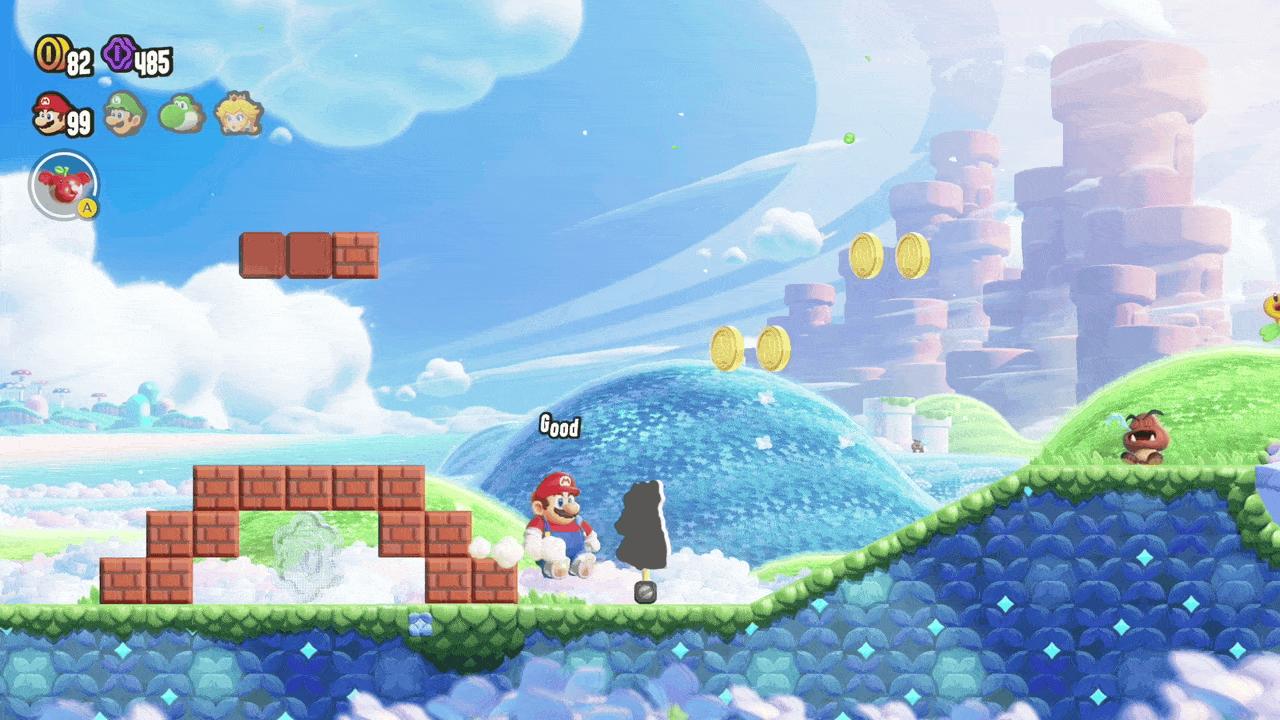Super Mario Bros. Wonder [Review]
Image credit: Wikipedia / Nintendo
I’ve been playing Mario games for a very long time, since I got my NES as a six or seven year old. Playing a new Mario game has always been a magical experience, and Super Mario Bros. Wonder is no exception. Here Nintendo does what they do best – create surprise and delight.
SMB Wonder is a new 2D Mario game. While we’ve had a rebirth of 2D Mario since the beginning of the New Super Mario Bros. series, this new game splits from that designation; it draws some features from those games while injecting a new aesthetic, new features, and new mechanics.
SMB Wonder boasts a new art style that feels far more polished than New SMB. Every character feels lovingly animated with a great sense of detail. Mario and company are more expressive and move with the fluidity of cartoon characters in an animated film. For those familiar with animation, we see more squash and stretch as well as smearing during motion. Mario has never felt more vivid. This extends to the enemies in the game as well. Everything just feels more alive.
This vividness extends to the Wonder Flower mechanic, the key conceit of the game. For me, in most Mario games, the levels with unique concepts or gameplay stand out - for example, the Kuribo’s Shoe level of SMB3. In SMB Wonder, every single level is like that. Somewhere in each stage, there’s a Wonder Flower. Usually it’s in plain sight, though a handful of times it’s hidden. When the player gets the flower, the level is transformed in a trippy way that creates unique, memorable gameplay until the player finds the Wonder Seed. In the first level of the game, the Wonder Flower turns the game into an acid trip where pipes begin to crawl like worms. Other times, it may transform the player, or even change the gameplay to top-down. I’m hesitant to say too much, because each time it happens it creates a sense of delight that would be a shame to spoil.
Image credit: Sam Kahn / Nintendo
Another new feature, the badge system, creates tons of opportunities for varied play. Throughout the game, you’re awarded special badges that give you either a new ability or give you a benefit in levels. For example, a badge could allow you to fall slowly through the air, give you a double jump, super speed, or even a Piranha Plant grappling hook. Other badges will do things like award you coins for defeating enemies, reveal special ! blocks, or give you a second chance when you fall. You can only equip one at a time; some are more useful than others, but they all give you chances to play levels in surprising, fun ways.
The game’s new power ups give Mario some cool new abilities. The most interesting of them is the Elephant Fruit, which turns you into Elephant Mario. You can use your trunk to hit things or break blocks, or store water to spray on flowers or fiery elements in levels. The game gives you this power up almost immediately. Even though it’s been touted in all the marketing so it’s not a surprise, getting it for the first time was still a joy.
Image credit: Sam Kahn / Nintendo
While Nintendo is behind the curve when it comes to online multiplayer, SMB Wonder does it in an interesting way that creates opportunities for great collaborative play, even with strangers, inspired at least in part by the Souls games. When you turn on the online option, you begin to see ghosts of other players in the world. Other players can be playing the level at the same time as you, and you see them in real time. This goes a step beyond something like seeing ghostly player deaths in Dark Souls. Here, players are able to assist each other. If you die in a level, you’re given a brief window of opportunity where you can touch a ghost player to revive yourself. Often players will pause or run back to help, which creates an awesome sense of teamwork. I’d find myself in situations where I run in tandem with someone else, and we revive each other through challenges. Or I would stand in a spot jumping up and down when I’d notice another player was stuck. Players can also leave standees in levels which also act as revival spots when touched, or you can use them to help mark secrets in levels for others. You can communicate using 4 emotes, which are more effective than you might think.
Image credit: Sam Kahn / Nintendo
This brings us to the game’s difficulty. The online systems make the game much easier, as in most cases you can prevent your death with the help of other players. Even without online play, the game is mostly breezy. Every stage has a star rating from 1 to 5, and in most cases a 4 or 5 isn’t as hard as some levels in past games, with few frustrating exceptions. Some of the playable characters also give players some guardrails - the four differently colored Yoshis and Nabbit can’t get hurt by enemies. Mario, Luigi, Peach, Daisy, Yellow Toad, Blue Toad, and Toadette all play identically. While the game isn’t very challenging, it’s always tons of fun.
The game is 8-12 hours long to complete, depending on how much time you spend finding the few collectibles in each stage. There’s definitely a lot of replayability, if you enjoy experimenting with badges or playing with other people. Like the last couple New SMB games, Wonder also has up to four player local multiplayer, which is a whole different, chaotic experience worth additional playthroughs.
I know this is high praise, but as of right now, SMB Wonder is very near the top spot for what I consider the best Mario games. It might be the best feeling Mario game to date. If you have a Switch, this is a must play.
Image credit: Sam Kahn / Nintendo






